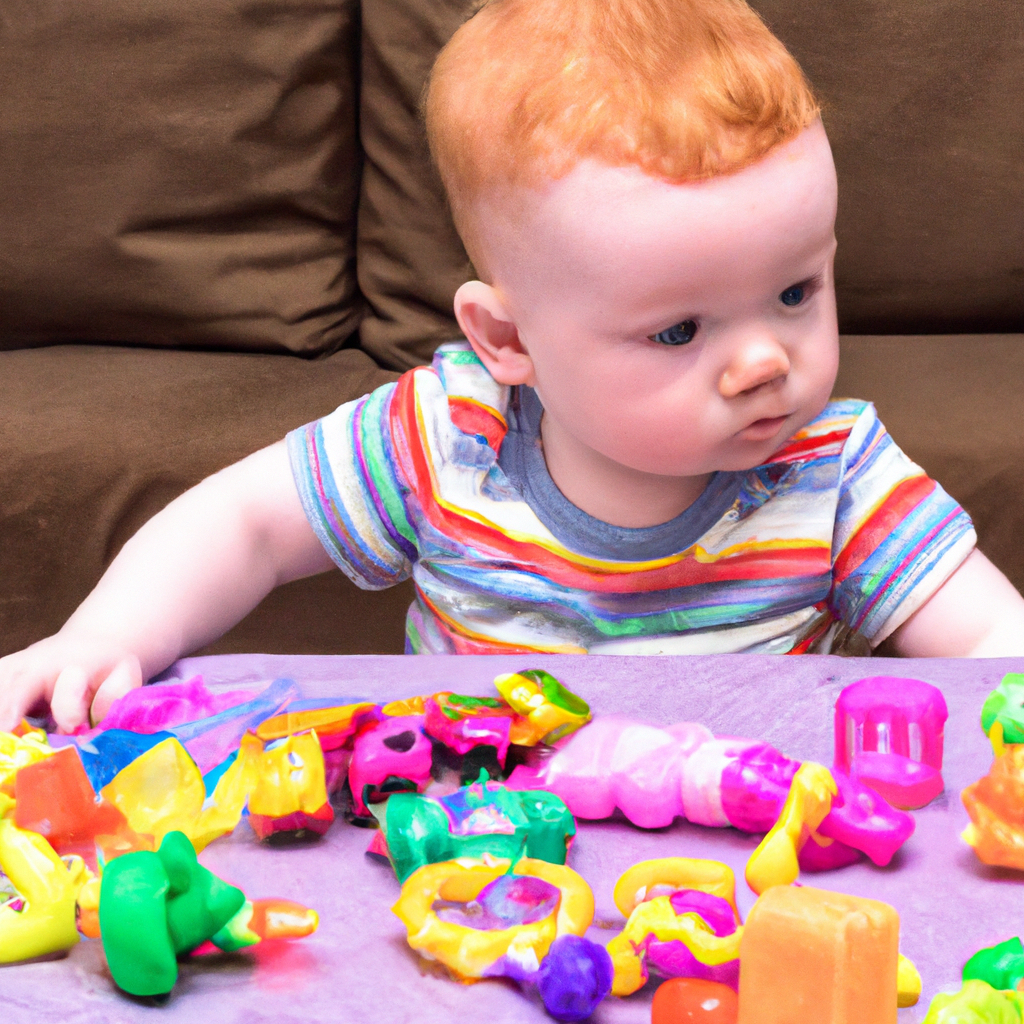As a researcher studying child development, I have always found the concept of centration fascinating. It serves as a filter that directs a child’s focus, shaping their perspective of the world.
But what exactly is centration? In this article, we’ll explore the definition, key concepts, and Piaget’s theory surrounding centration.
We’ll also delve into the characteristics, age range, and factors influencing centration in children.
So, join me on this journey as we unravel the mysteries of centration and discover its impact on a child’s development.
Key Takeaways
- Centration refers to focusing on one aspect of a situation and ignoring others.
- Centration is a cognitive limitation in child development that occurs during the preoperational stage.
- Centration is associated with egocentrism and the limited ability to consider multiple factors simultaneously.
- Proper guidance and support can help children overcome centration and broaden their perspective.
Definition of Centration
You should know that centration refers to when a child focuses only on one aspect of a situation and ignores all the other aspects. This cognitive process is a key concept in child development that was first introduced by Jean Piaget. According to Piaget’s theory of cognitive development, centration occurs during the preoperational stage, which is typically between the ages of two and seven.
During this stage, children have not yet developed the ability to think logically and understand multiple perspectives. Instead, they tend to focus on the most salient feature or aspect of a situation. For example, if you show a child a row of five coins and then spread them out, they may think that the spread-out row has more coins, even though the number remains the same.
Understanding key concepts in centration is crucial for parents, educators, and caregivers. By recognizing that young children tend to focus on one aspect of a situation, adults can provide appropriate guidance and support. It is important to engage children in activities that encourage them to consider multiple perspectives and think critically. By doing so, we can help them develop more advanced cognitive skills and overcome the limitations of centration.
Transitioning into the subsequent section about key concepts in centration, it is important to explore the various cognitive processes involved in this phenomenon.
Key Concepts in Centration
One of the key concepts in centration is the idea that children focus on one aspect of a situation and ignore others. This characteristic of centration is linked to children’s cognitive processes and their limited ability to consider multiple factors simultaneously. When children engage in centration, they tend to concentrate on the most salient or noticeable feature of a situation, disregarding other relevant information.
For example, a child might focus solely on the height of a glass of water and ignore its width when determining if the amount of water has changed. This tendency to focus on one aspect at a time can lead to errors in thinking and problem-solving.
Centration is also associated with children’s egocentrism, another key characteristic of their cognitive development. Egocentrism refers to the inability to understand or take into account another person’s perspective. In the context of centration, this means that children may not consider how their focus on one aspect of a situation may differ from someone else’s perspective. They assume that everyone views the situation in the same way they do.
Transitioning into the subsequent section about Piaget’s theory and centration, it is important to understand how centration fits into Piaget’s overall framework of cognitive development.
Piaget’s Theory and Centration
In this discussion, I will explore the role of centration in cognitive development, as proposed by Piaget’s theory of child development.
Centration refers to the tendency of young children to focus on only one aspect of a situation, while neglecting others. This cognitive limitation can have significant implications for a child’s understanding of the world and their problem-solving abilities.
Centration and Cognitive Development
Centration, in child development, is when your child focuses on only one aspect of a situation and ignores other important factors. This cognitive process can have a significant impact on their problem-solving skills. Here are four key points to consider:
-
Limited perspective: Centration restricts a child’s view to only one feature of a problem, preventing them from considering other relevant information.
-
Difficulty in conservation: Centration makes it challenging for children to understand that the quantity of an object remains the same despite changes in appearance.
-
Concrete thinking: Children in the preoperational stage tend to engage in centration due to their reliance on concrete experiences rather than abstract reasoning.
-
Developmental milestone: Centration is a normal part of cognitive development and gradually diminishes as children progress through Piaget’s stages.
Understanding the limitations of centration is crucial as it helps us recognize the challenges children face in their cognitive development.
Limitations of Centration
To better understand the limitations of centration, you should consider how it can hinder your child’s ability to consider multiple factors in a situation. Centration, a cognitive process in child development, refers to the tendency of young children to focus on only one aspect of a problem while ignoring other relevant information. This limited perspective can lead to errors in reasoning and decision-making. For example, a child might only focus on the quantity of an object, ignoring its size or shape. To illustrate the limitations of centration, consider the following table:
| Limitations of Centration |
|---|
| Narrow focus on one aspect |
| Ignoring relevant information |
| Difficulty considering multiple factors |
| Inaccurate reasoning |
| Limited problem-solving abilities |
As we delve into the characteristics of centration in child development, we will explore how these limitations can impact a child’s cognitive processes and overall development.
Characteristics of Centration in Child Development
When it comes to cognitive development, centration tendencies have significant implications. Centration refers to the child’s tendency to focus on only one aspect of a situation or problem, neglecting other relevant information.
This limitation can hinder their problem-solving abilities and overall cognitive growth. However, there are strategies and interventions that can help children overcome centration tendencies and develop more flexible thinking skills.
Cognitive Development Implications
One of the cognitive development implications of centration is the tendency for children to focus on only one aspect of a problem or situation. This can limit their cognitive flexibility and lead to cognitive biases. Cognitive flexibility refers to the ability to shift attention and adapt thinking strategies when faced with different situations. However, when children engage in centration, they become fixated on one aspect and fail to consider other relevant information. This can result in errors in problem-solving and decision-making. To illustrate this, consider the following table:
| Problem | Aspect Focused On | Other Relevant Information |
|---|---|---|
| Adding Numbers | Only the sum | Individual numbers |
| Sorting Objects | Only color | Shape or size |
As seen in the table, children who engage in centration may overlook important aspects of a problem, leading to limited cognitive flexibility. This cognitive bias can have implications for their overall cognitive development. Moving forward, it is important to understand the limitations and challenges associated with centration in child development.
Limitations and Challenges
You may face certain limitations and challenges in understanding and adapting to different situations due to the tendency to focus on only one aspect.
When it comes to centration in child development, age-related challenges can arise. Children at different stages of cognitive development may struggle with centration, which can have implications for their overall cognitive growth.
For example, preschool-aged children often demonstrate centration by only focusing on one aspect of a problem or situation, overlooking other relevant information. This narrow focus can limit their understanding and problem-solving abilities.
Additionally, older children may also face challenges in overcoming centration tendencies, as it takes time and practice to develop the ability to consider multiple aspects simultaneously.
However, with proper guidance and support, children can learn to overcome centration and broaden their perspective, leading to more effective cognitive development.
Overcoming Centration Tendencies
With proper guidance and support, children can learn to overcome centration tendencies and broaden their perspective. Overcoming centration requires the development of strategies for balanced thinking. These strategies help children consider multiple perspectives and take into account different aspects of a situation. By learning to overcome centration, children can make more informed decisions and understand the world from a more holistic viewpoint.
One effective strategy for overcoming centration is teaching children to engage in perspective-taking. This involves encouraging them to consider how others might think or feel in a given situation. By doing so, children learn to shift their focus away from their own limited viewpoint and consider the thoughts and feelings of others.
Another strategy is promoting flexible thinking. This involves helping children recognize that there can be multiple valid perspectives on a situation and that their own viewpoint is not the only one that matters. By encouraging them to consider alternative viewpoints, children learn to think more flexibly and overcome centration tendencies.
Incorporating a 2 column and 3 row table:
| Strategies for Overcoming Centration Tendencies |
|---|
| 1. Perspective-taking |
| 2. Flexible thinking |
Transitioning into the subsequent section about the age range for centration, it is important to understand how children develop the ability to overcome centration tendencies.
Age Range for Centration
The age range for centration starts around 2-7 years old. During this period of cognitive development, children tend to focus their attention on one aspect of a situation, neglecting other relevant information. This concept of centration has significant implications for their cognitive development.
At this age, children’s thinking is characterized by egocentrism and a lack of conservation skills. They have difficulty understanding that the quantity of a substance remains the same, even if its appearance changes. For example, if you pour the same amount of water from a short, wide glass into a tall, narrow glass, they may believe that there is now more water in the tall glass.
Centration is a necessary step in cognitive development, as it allows children to gradually move towards more sophisticated thinking. However, it also limits their ability to consider multiple perspectives or variables simultaneously.
Transitioning into the subsequent section about the cognitive processes involved in centration, it is crucial to understand how children’s thinking evolves beyond centration and how they begin to develop more complex cognitive abilities.
Cognitive Processes Involved in Centration
During this stage, your child’s thinking becomes more flexible, and they begin to consider multiple aspects of a situation. It is fascinating to observe the cognitive processes involved in centration as they play a crucial role in shaping your child’s understanding of the world.
Here are a few key points to grab your attention:
-
Cognitive biases: Children at this stage may exhibit certain cognitive biases, such as confirmation bias or anchoring bias. These biases can influence their attentional focus, causing them to prioritize certain information over others.
-
Attentional focus: Centration involves the child’s tendency to focus on one aspect of a situation while neglecting others. Their attentional focus becomes narrow, making it difficult for them to consider multiple perspectives or variables simultaneously.
Understanding these cognitive processes is important because they have a significant impact on your child’s problem-solving skills. As we delve further into the topic, we will explore how centration can limit their ability to find creative solutions and hinder their problem-solving abilities.
The impact of centration on problem-solving skills goes beyond mere observation. It is crucial to understand how this cognitive bias affects your child’s ability to approach and solve problems effectively.
Impact of Centration on Problem Solving Skills
You may be interested to know how centration can hinder problem-solving skills and limit your ability to find creative solutions. Centration refers to the tendency to focus on only one aspect of a problem or situation, while ignoring other relevant information. This cognitive limitation can have a significant impact on problem-solving abilities.
When individuals engage in centration, they become fixated on a single dimension or feature of a problem, neglecting other important factors. This narrow focus makes it difficult to consider alternative perspectives or think outside the box. As a result, problem-solving becomes limited and less effective.
Centration also plays a role in decision-making. When individuals are centered on a specific aspect of a problem, they may overlook important information that could lead to better choices. This can lead to suboptimal decisions and missed opportunities.
Understanding the impact of centration on problem-solving and decision-making is crucial, especially in educational and professional settings where finding creative solutions is highly valued. By recognizing the role of centration, individuals can develop strategies to overcome this cognitive limitation and enhance their problem-solving skills.
Now, let’s explore the factors that influence centration in children, shedding light on how this cognitive process develops and evolves throughout childhood.
Factors Influencing Centration in Children
One important factor that influences how children engage in centration is their level of cognitive development. As children develop cognitively, their ability to focus on one aspect of a situation while disregarding others improves. This ability, known as centration, is influenced by a variety of factors.
Factors influencing centration in children include:
- Age: Younger children tend to have a more limited ability to focus their attention on a single aspect of a situation, while older children are able to engage in more sophisticated centration.
- Executive functioning skills: Children with stronger executive functioning skills, such as working memory and inhibitory control, are better able to engage in centration.
- Environmental factors: The environment in which a child grows up can also influence their ability to engage in centration. For example, a chaotic home environment may make it more difficult for a child to focus their attention on one aspect of a situation.
- Cultural factors: Cultural beliefs and practices can also influence how children engage in centration. For example, some cultures may prioritize holistic thinking over focused attention on one aspect.
Understanding these factors is crucial for promoting effective centration in children and supporting their cognitive development. In the following section, we will explore examples of centration in everyday life, illustrating how it impacts children’s understanding of the world around them.
Examples of Centration in Everyday Life
When it comes to decision-making, centration can play a significant role in our thought processes. Centration refers to the tendency to focus on only one aspect of a situation, often neglecting other important factors. This can lead to biased decision-making and limited perspectives.
However, by engaging in perspective-taking, we can overcome centration and gain a more comprehensive understanding of the situation at hand.
Centration in Decision-Making
Centration in decision-making occurs when I focus on only one aspect of a situation, ignoring other relevant factors. This cognitive bias can lead to flawed decision-making and hinder problem-solving abilities.
When I experience centration, I tend to overlook alternative perspectives, available options, and potential consequences. It is as if I am wearing blinders, unable to see the bigger picture. This narrow focus limits my cognitive flexibility, preventing me from considering multiple viewpoints and making well-rounded decisions.
Overcoming centration requires actively engaging in perspective-taking. By stepping back and considering different angles, I can broaden my understanding and enhance my decision-making skills.
Transitioning into the subsequent section, perspective-taking offers a valuable tool to overcome the limitations of centration.
Overcoming Centration Through Perspective-Taking
To overcome centration and broaden your perspective, actively engage in perspective-taking. Perspective-taking involves the ability to understand and consider the viewpoints of others, which can help counteract the challenges posed by centration.
Centration, a cognitive process in child development, refers to the tendency to focus on one aspect of a situation and overlook others. This can lead to limited thinking and decision-making.
By actively engaging in perspective-taking, individuals can challenge their centration tendencies and gain a more comprehensive understanding of a given situation. Research has shown that perspective-taking not only enhances empathy and social skills but also improves problem-solving abilities and decision-making processes. It allows us to consider multiple perspectives and factors, leading to more informed and balanced judgments.
However, it is important to acknowledge the critiques and limitations of centration theory to fully understand its implications and potential drawbacks.
Critiques and Limitations of Centration Theory
One of the critiques of centration theory is that it may oversimplify the complexities of children’s cognitive development. Critics argue that centration theory fails to capture the full range of cognitive abilities that children possess. They argue that children can engage in more complex thinking and take multiple factors into consideration.
Another limitation of centration theory is its emphasis on the individual child’s thinking, neglecting the influence of social and cultural factors on cognitive development. Critics argue that cognitive development is shaped by the interactions between children and their environment. For example, children’s ability to think flexibly and consider multiple perspectives may be influenced by their exposure to diverse viewpoints and experiences.
In order to address these critiques and limitations, strategies for promoting balanced thinking in child development can be employed. These strategies include providing children with opportunities to engage in collaborative problem-solving tasks, encouraging them to consider multiple viewpoints, and exposing them to diverse cultural experiences.
Strategies for Promoting Balanced Thinking in Child Development
In examining the critiques and limitations of centration theory, it becomes clear that promoting balanced thinking in child development is crucial. To achieve this, several strategies can be implemented.
Firstly, educators and caregivers can encourage children to explore multiple perspectives. By presenting diverse viewpoints and encouraging open-mindedness, children develop the ability to consider different sides of an issue. This allows them to develop a more well-rounded and balanced understanding of the world.
Secondly, providing opportunities for critical thinking is essential. This can be done by engaging children in problem-solving activities that require them to analyze, evaluate, and generate solutions. By encouraging them to think critically, children develop the skills necessary to assess information objectively and make informed decisions.
Furthermore, teaching children to question assumptions and challenge stereotypes is crucial for promoting balanced thinking. This can be achieved by encouraging them to ask questions, seek evidence, and consider alternative explanations. By doing so, children learn to approach information with a healthy skepticism and develop a more nuanced understanding of the world around them.
Frequently Asked Questions
How Does Centration Impact a Child’s Emotional Development?
Centration plays a significant role in shaping a child’s emotional development. It impacts their self-esteem and self-confidence by influencing their ability to focus on multiple aspects of a situation or emotion.
Centration can limit a child’s perspective and hinder their understanding of complex emotions. This may result in difficulties in expressing and regulating emotions effectively.
Therefore, understanding the impact of centration on a child’s emotional development is crucial for promoting healthy emotional well-being and fostering positive emotional expression.
Can Centration Affect a Child’s Social Skills?
Centration can have a significant impact on a child’s social skills. When children are focused on one aspect of a situation and unable to consider multiple perspectives, it can hinder their ability to interact effectively with peers.
This narrow focus can also affect their communication skills development, as they may struggle to understand and interpret nonverbal cues or engage in reciprocal conversations.
Therefore, it is important to address centration in order to support the development of healthy peer relationships and effective communication skills in children.
Are There Any Cultural Differences in the Manifestation of Centration?
Cultural influences play a significant role in the prevalence of centration in child development. Different cultures may prioritize certain cognitive skills over others, leading to variations in how centration is manifested.
For example, in some cultures, there may be a greater emphasis on individualism, which could result in higher instances of centration. Conversely, cultures that prioritize collectivism may have lower prevalence of centration.
These cultural differences highlight the importance of considering cultural context when studying and understanding centration in child development.
What Are Some Potential Long-Term Effects of Centration on a Child’s Cognitive Abilities?
What potential consequences can centration have on a child’s cognitive development?
The tendency to focus on only one aspect of a problem can limit a child’s ability to think critically and consider multiple perspectives. This narrow mindset may hinder their problem-solving skills and creativity.
Additionally, centration can impact a child’s ability to understand conservation, which is important for mathematical concepts.
It is crucial to address centration in early childhood to promote well-rounded cognitive development.
How Can Parents and Educators Help Children Overcome Centration and Develop More Balanced Thinking?
To help children overcome centration and develop more balanced thinking, parents and educators can use cognitive interventions and problem-solving strategies.
By engaging children in activities that require critical thinking and perspective-taking, they can learn to consider multiple viewpoints and avoid focusing solely on one aspect.
Encouraging children to explore different solutions to problems and teaching them to think flexibly can also help them develop more balanced thinking skills.
These interventions and strategies can support children’s cognitive development and enhance their ability to think critically and creatively.
Conclusion
In conclusion, centration is a fascinating concept in child development. It highlights a child’s tendency to focus on one aspect of a situation while neglecting others. Through Piaget’s theory, we have gained valuable insights into the characteristics and age range for centration, as well as the factors influencing it.
However, it is important to acknowledge the critiques and limitations of centration theory. We also need strategies to promote balanced thinking in children. By understanding and addressing centration, we can unlock the full potential of a child’s cognitive development.
As Albert Einstein once said, ‘Imagination is more important than knowledge.’ By embracing a more balanced perspective, we can truly nurture the brilliance within our children.









